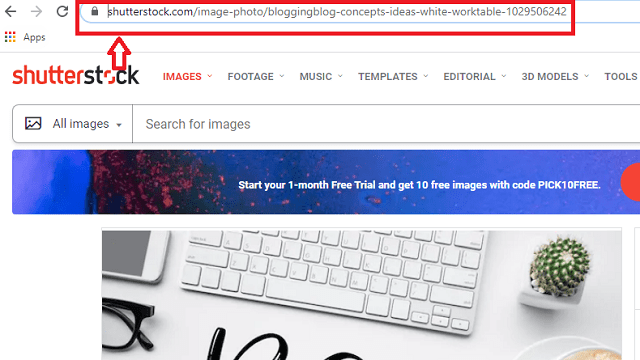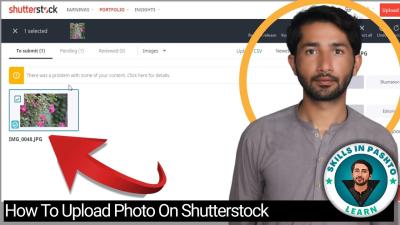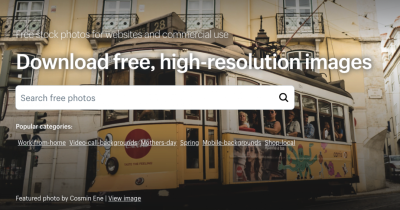If you’re into creating content—whether it’s a blog, a presentation, or a social media post—you’ve probably come across Shutterstock. It’s one of the biggest stock image platforms out there, offering millions of high-quality photos, vectors, and illustrations. But here’s the catch: Shutterstock isn’t free. You typically need to pay for a license to use their images legally. This license grants you the right to use the images in specific ways, depending on what you purchase. However, many people wonder if there are ways to get those stunning images without breaking the bank or ending up with watermarked versions. That’s what this guide is all about: exploring legit ways to access
Understanding the Risks of Using Unlicensed Shutterstock Images

Using Shutterstock images without a proper license might seem tempting, especially when you’re eager to save money or get creative quickly. But let’s talk about why that’s a risky move. First off, copyright infringement is a serious issue. When you use images without permission, you’re violating copyright law, which can lead to legal trouble, hefty fines, or even lawsuits. Not exactly the kind of stress you want, right?
Besides legal risks, there’s also the matter of image quality and credibility. Watermarked images might be tempting to use, but they look unprofessional and can damage your reputation. Plus, if you try to remove watermarks or use unlicensed images, you’re risking your project being taken down or facing penalties.
Another important aspect is the ethical side. Creators and photographers put a lot of effort into their work, and using their images without proper licensing disrespects their rights and efforts. Supporting artists by purchasing or licensing images legally helps keep the creative industry thriving.
In summary, while it might seem like an easy shortcut, using unlicensed Shutterstock images can lead to serious consequences. It’s better to explore legitimate ways to access images—like free trials, royalty-free collections, or creative commons options—that respect copyright laws and support creators. In the next sections, we’ll dive into some helpful tips and strategies to get high-quality images legally and for free in 2018.
Legal Ways to Access Free Shutterstock Images Without Watermarks
So, you’re eager to get high-quality Shutterstock images without those pesky watermarks, but you want to make sure you’re playing it by the rules. That’s totally understandable! The good news is, there are legitimate ways to access Shutterstock images legally, without crossing any copyright lines or risking penalties.
First up, Shutterstock often offers free image downloads during special promotions or for new users. Keep an eye on their official website, newsletters, or social media channels — they occasionally run campaigns where you can snag free images legally. These are typically limited-time offers, so acting quickly is key.
Another option is to sign up for Shutterstock’s free trial. Usually, they offer a 7-day trial period where you can download a set number of images without watermarks. Just remember to cancel before the trial ends if you don’t want to be billed. During this trial, you can download images in their full quality and use them legally in your projects. It’s a great way to get the images you need without any watermark hassle and without breaking the bank.
Additionally, Shutterstock sometimes provides free images as part of their ‘Free Image of the Week’ or ‘Free Photo Bundle’ promotions. These images are often available for download with a simple registration process, and they come with the necessary rights for personal or commercial use. Always check the licensing details, but these are legitimate options to access Shutterstock images without watermarks.
Finally, consider subscribing to Shutterstock’s subscription plans or purchasing individual images legally. While this isn’t free, it guarantees you access to high-quality, watermark-free images with legal rights to use them. If budget is tight, look out for discounts or bundle offers—sometimes, they run promotions that make purchasing more affordable.
In summary, the key to accessing Shutterstock images legally without watermarks is to utilize their official free resources, take advantage of free trials, and stay alert for promotional offers. This way, you can confidently incorporate stunning images into your projects without risking copyright infringement or legal trouble.
Utilizing Free Image Resources and Alternatives to Shutterstock
If you’re looking for quality images but want to avoid the hassle or costs associated with Shutterstock, there’s a treasure trove of free image resources out there. These sites offer a wide range of high-resolution photos, illustrations, and vectors that you can use legally and often without attribution. Let’s explore some of the best alternatives and how to make the most of them.
Popular Free Image Websites:
- Unsplash: Known for its stunning, high-resolution photos donated by talented photographers worldwide. All images are free to use for commercial and personal projects with no attribution required (though credit is appreciated).
- Pexels: Offers a vast collection of free stock photos and videos. Their licensing is simple—use, modify, and distribute without restrictions.
- Pixabay: Provides over 1.7 million free images, videos, and music. Content is released under Creative Commons CC0, so you can use it freely without attribution.
- FreeImages: Another solid resource with a wide variety of free stock photos. Make sure to check individual image licenses, as some may require attribution.
Beyond these, there are niche sites and platforms that cater to specific needs, like free illustrations (unDraw, Open Doodles) or vector graphics (Vexels, Flaticon). These can be perfect if you’re designing logos, icons, or unique visuals.
Tips for Using Free Image Resources:
- Always double-check licensing: While most free resources are safe, some images might have restrictions. Read the license details before downloading.
- Give credit when possible: Even if not required, attributing photographers or sites is a nice way to support creators.
- Use high-resolution images: For professional projects, pick the highest quality available to ensure your visuals look polished.
- Combine multiple resources: Mix images from different sites to create unique compositions tailored to your needs.
In addition to free resources, consider using image editing tools like Canva or Figma, which often integrate free image libraries directly into their platforms. This can save you time and streamline your workflow.
While Shutterstock is a fantastic resource, these free alternatives are more than enough for many projects—especially when you’re on a budget or just starting out. With a bit of exploration, you’ll find a wealth of stunning free images that can elevate your content without worrying about watermarks or copyright issues.
Tips for Finding High-Quality Free Images for Your Projects
Finding the perfect image for your project can sometimes feel like searching for a needle in a haystack. But with a few smart strategies, you can uncover high-quality, free images that truly elevate your work. Here are some tips to help you along the way:
- Use Reputable Free Image Platforms: Stick to well-known sources like Unsplash, Pexels, and Pixabay. These sites curate high-quality images and have extensive libraries that are free for commercial and personal use.
- Refine Your Search Terms: Be specific with your keywords. Instead of just searching for “mountains,” try “snow-capped mountain sunrise” to find images that better match your vision.
- Check Image Resolution: Always look for images with high resolution, especially if you plan to print or use them in large formats. Most free platforms display the resolution details, so pick images that are at least 1920 pixels wide for good quality.
- Pay Attention to Licensing: Even on free sites, some images may have restrictions. Read the license details carefully to ensure you’re allowed to use the image for your intended purpose without attribution or restrictions.
- Filter by Orientation and Color: Use filters to narrow down your options. For example, if you need a horizontal image with a specific color theme, filters can save you time.
- Look for Authentic and Natural Shots: Authentic images often resonate more with viewers. Avoid overly staged or cheesy stock photos when possible, and instead, choose images that feel genuine and relatable.
- Download Multiple Options: Always download a few options for the same project. Comparing them side by side can help you pick the best fit and give you alternatives if one doesn’t work out.
Remember, patience and a good eye are key. The perfect image is out there—you just need to know where and how to look for it!
Conclusion and Best Practices for Using Stock Images Legally
Using stock images can be a fantastic way to enhance your projects without breaking the bank, but it’s crucial to do so responsibly. Here’s a quick recap of best practices to ensure you stay within legal boundaries and get the most out of your images:
- Always Check Licensing Terms: Even if an image is labeled as free, read the license carefully. Some images require attribution, while others are free for commercial use without credit. Ignoring these details can lead to legal issues.
- Give Proper Attribution When Required: If the license asks for attribution, make sure to credit the photographer or source clearly in your project, following the specified format.
- Avoid Copyright Infringement: Never use images that you haven’t verified as free or licensed for your use. Using copyrighted images without permission can result in legal action.
- Use Reputable Sources: Stick with trusted platforms like Unsplash, Pexels, Pixabay, and others that clearly state licensing info. These sites make it easier to comply with legal requirements.
- Customize and Edit: Feel free to edit stock images to better fit your brand or project. Slight modifications can make the image more unique and aligned with your message.
- Maintain Documentation: Keep records of where you sourced your images and their licenses. This documentation can be invaluable if questions about usage rights arise later on.
- Respect Ethical Guidelines: Avoid using images in a misleading or harmful way. Be respectful of individuals’ privacy and dignity, especially with photos that feature people.
By following these best practices, you can confidently incorporate stock images into your projects, making them look professional while respecting legal and ethical standards. Remember, responsible use not only protects you legally but also helps support the creators who generously share their work for free. Happy image hunting!


